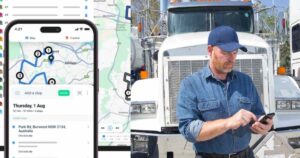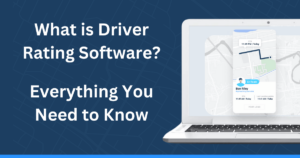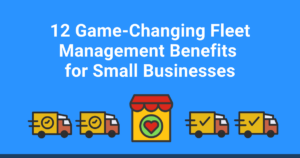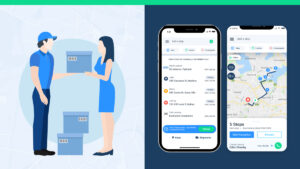Managing deliveries with manual processes might work in the short term, but as your business grows, inefficiencies pile up. A transport management system (TMS) can streamline logistics, optimize routes, and cut fuel and maintenance costs.
Your customers will undoubtedly be happy about this as it boosts customer satisfaction with better live tracking and faster deliveries.
But listen up… if you are still relying on spreadsheets and gut instinct, you need to hear this.
TMS software can transform the way you’ve been running your business and make it more efficient. The right transportation management system automates dispatching, tracks deliveries in real-time, and ensures that your fleet complies with transport regulations.
A transport management system can do more than organize your operations. It can also increase efficiency by showing you where there are shortcomings, opportunities to improve customer satisfaction and cost savings.
So, whether you run an online shop, courier company, or large trucking delivery service, TMS software will increase your productivity and profitability.
Here are eight signs that your business needs to upgrade to transportation management software and eliminate inefficiencies.
What Is a Transport Management System?
A Transport Management System (TMS) is a platform used by logistics services, e-commerce, retail businesses, and courier and parcel delivery companies. Its primary purpose is planning and transporting goods.
Experts design transport management solutions to organize documents and ensure compliance with trade requirements. Transport management is part of a complex supply chain system.
Trucking companies rely on TMS software to optimize routes, save fuel costs, and track shipments in real-time.
Suppose you own an online store or supermarket or head up a retailer. In that case, a transportation management system is handy for order fulfillment, last-mile delivery, and stock distribution from warehouse to store.
At the same time, courier companies like DHL, FedEx, and UPS also use TMS software to handle high-volume shipments, optimize routes, and improve their live tracking, which customers use.
WATCH: How Does a TMS System Work?
Why do I need a Transport Management System?
1. You Have Delivery Chaos: Transport Management System Automates it
It’s a manual nightmare. Think of all the spreadsheets, misplaced receipts, phones ringing off the hook, and scattered communication.
If this describes your business, this is your sign to quit the manual tasks and reduce administrative costs.
There are inefficiencies in the office, workplace,e and on the road. But think of an automated system. It saves you time and conflict.
When systems are automated with a transportation management system, route planning, dispatching, and real-time tracking happen automatically, ensuring consistency.
2. Turn Guesswork into Data-Driven Decisions With TMS
You have delivery drivers doing the same job for the past 40 years. They know all the routes.
You’ve taken over the family business and rely on gut feelings to make decisions. That’s how your family has been doing it, and you’re doing the same.
But this is dangerous…
It can lead to missed cost savings opportunities. Fuel is expensive, and according to Mixtelematics, it represents 60% of a fleet operating budget. If that veteran delivery driver suddenly puts his foot down (he knows the roads too well), fuel consumption can spike by 20%.
3. TMS Reduces the ‘Where’s My Order?’ Calls
GT Product Sales, specializing in automotive spare parts, has struggled for some time with an influx of calls from customers asking where their orders are.
This was until they started using Locate2u’s software, which helped them organize and streamline operations.
Customers can quickly get frustrated when there is a lack of visibility. A transportation management system helps customers to know their order status, which boosts customer satisfaction.
Real-time tracking and automated alerts reduce inquiries, leaving more time and resources to send orders on time.
4. Beat the Traffic With Every Delivery
Unoptimized routes lead to late deliveries. This frustrates customers and could damage your brand.
Using real-time traffic data with route optimization allows you to cushion the impact for immediate route changes. It leverages GPS systems, traffic monitoring tools, and real-time data feeds to identify road conditions as they unfold.
A transportation management system finds the fastest, most fuel-efficient routes, reducing delays and improving delivery times.
ALSO READ: 8 Reasons Why Route Optimization Saves You Time During Last-Minute Changes
WATCH: Route Optimization Saves Time and Money
5. TMS Reduce Delivery Errors (and Angry Customers)
A parcel that goes missing, an incomplete address on the delivery note, or a package that is misrouted can hurt your business.
However, having a system that handles all these needs in one place can be extremely helpful. Human error can easily slip in, but with automated address verification, barcode scanning, and live tracking, this won’t happen.
6. How to Turn Compliance into a Breeze with a Transport Management System
There are some hidden risks of non-compliance with regulatory transportation laws. This could be fines, legal action, or reputational damage.
If your business operates fleets in the logistics industry, it must comply with government regulations regarding vehicle maintenance, driver safety, and transport laws.
But staying on top of all of this is difficult and time-consuming. Ignoring it can damage your business.
A transportation management system ensures compliance by automating vehicle maintenance and scheduling. It also tracks hours of service, which helps with audit logs.
7. Confused: Why Do You Have Delivery Issues?
It’s common to have delivery issues. Customers return orders, drivers are inefficient, and customers are confused about when their parcels will arrive.
A Transport Management System identifies the bottlenecks in your systems and makes every mistake a learning opportunity. It identifies trends and failures and sees where the main problem lies.
A transportation management system collects performance data and helps your business to identify and streamline recurring issues.
8. Are Your Delivery Drivers Your Biggest Liability?
Delivery drivers shouldn’t be your most significant liability but rather your biggest asset.
A transportation management system tracks driver behavior, allowing you to identify specific drivers’s shortcomings. It could be that a particular driver is speeding and braking harshly, resulting in your fuel bill spiking monthly.
You want your drivers to perform better, and the analytics that a TMS provides can improve this.
NOW READ: How a Transport Management System Can Boost Your Business
About the author
Mia is a multi-award-winning journalist. She has more than 14 years of experience in mainstream media. She's covered many historic moments that happened in Africa and internationally. She has a strong focus on human interest stories, to bring her readers and viewers closer to the topics at hand.











